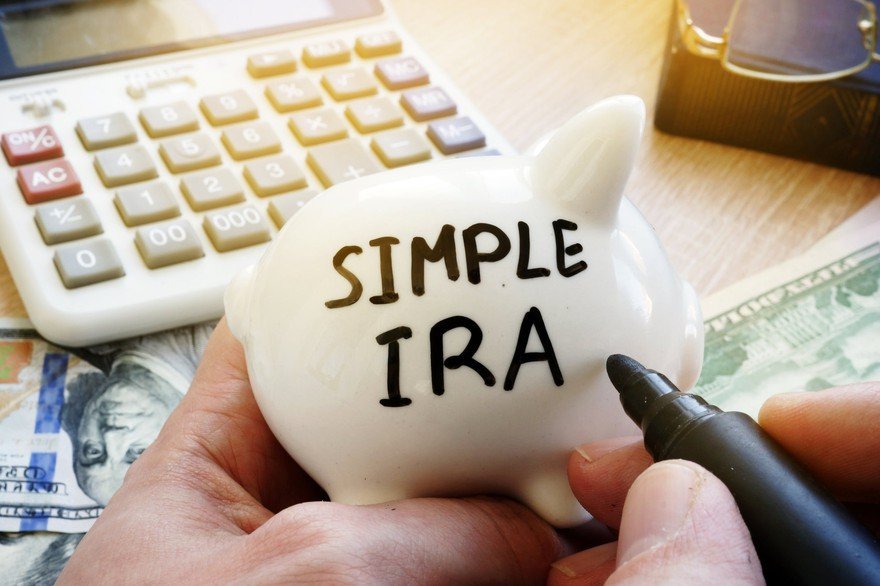While SIMPLE IRAs are in some ways similar to their cousins, traditional and Roth IRAs, they also share some features with workplace retirement plans such as 401(k)s. Understanding your plan's rules is crucial for getting the most out of it and avoiding common fees.
Here's a closer look at some of the most important rules surrounding SIMPLE IRA eligibility, contributions, and withdrawals.

SIMPLE IRA eligibility rules
A SIMPLE IRA is available to self-employed individuals and small businesses with 100 or fewer employees and no other workplace retirement plan. Employees automatically qualify if they have earned at least $5,000 in compensation from the business in two prior years (which do not have to be consecutive) and expect to earn at least $5,000 in the current calendar year.
Employers can also allow employees who don't meet these criteria to participate if they'd like, but they can't create their own more stringent eligibility requirements. However, employers can exclude employees covered by a union agreement if they choose, even if they meet the above criteria, as well as nonresident alien employees who do not receive U.S. wages from the employer.
SIMPLE IRA contribution rules
You may contribute up to $16,000 to a SIMPLE IRA in 2024, up from $15,500 in 2023. This is a little lower than the contribution limits for other workplace retirement plans, like 401(k)s, and much higher than traditional IRA contribution limits for traditional and Roth IRAs. Those 50 and older may also make an extra $3,500 catch-up contribution in both 2023 and 2024.
This is a little less than half the catch-up contribution allowed to workers with 401(k)s. In both 2023 and 2024, workers 50 and older can contribute an extra $7,500 to their 401(k)s.
As with all retirement plans, you cannot contribute more than you earned during the year to your SIMPLE IRA, so if you don't earn at least $16,000 from your employer in 2024, your maximum contribution is 100% of your income for the year.
Your contributions reduce your taxable income for the year, so the more you put away in the account, the lower your annual tax bill will be this year. But that means you owe taxes when you make withdrawals. More on that below.
If you plan to participate in your company's SIMPLE IRA, you must make your contributions within 30 days after the end of the month in which your employer paid you. Normally you can set it up so the funds are automatically withheld from your paycheck; that way, you don't have to remember to set aside the money.
You must wait for an annual election period if you wish to change your contribution levels. The government requires all SIMPLE IRA plans to have an annual election period between Nov. 2 and Dec. 31 every year, but your employer may choose to have additional election periods throughout the year as long as they are at least 60 days long and the company provides you with prior notice about the upcoming election period. Talk to your employer if you're unsure when you can make changes to your contribution levels.
You don't have to put any money into your SIMPLE IRA if you don't want to or cannot afford to. But think carefully before you make the decision to stop your contributions. If you do, your employer can prevent you from making new contributions to the account until the beginning of the next calendar year if it doesn't have another annual election period besides the one required by law.
SIMPLE IRA employer matching rules
SIMPLE IRAs are unusual in that they require employers to make contributions to their employees' accounts, although they may choose between elective and nonelective contributions. Elective contributions are a dollar-for-dollar match of up to 3% of an employee's salary. You get this match only if you personally contribute money to your SIMPLE IRA. Otherwise, you forfeit it.
If employers aren't able to provide a 3% match for some reason, they may reduce their elective contribution matching percentage. However, they may not drop it below 1%, nor can they drop it below 3% for more than two out of five years.
Employers that choose a nonelective contribution must set aside the equivalent of 2% of their employees' compensation, regardless of whether the employee puts any money into their SIMPLE IRA. For most employees, the 2% contribution is based on actual salary, but this may not be the case for high earners. The IRS requires that employers match only 2% of the first $330,000 the employee earns in 2023, or $345,000 in 2024, so those who earn more may actually get a smaller match.
Whichever matching formula your employer chooses, the money it contributes to your SIMPLE IRA on your behalf is always yours to keep immediately with no vesting period. That means you take it all with you, even if you leave the company after a month. But you may not see this money appear in your account right away since your employer has until the tax filing deadline to make its matching contributions.
SIMPLE IRA withdrawal rules
The rules for withdrawing funds from a SIMPLE IRA are similar to the rules for traditional IRA withdrawals. You pay taxes on your money when it comes out of your account, and if you make a withdrawal at younger than 59 1/2 without a qualifying reason, such as the need to pay a large medical bill, you must also pay a 10% early withdrawal penalty. However, unlike traditional IRAs and most other retirement accounts, SIMPLE IRAs charge a 25% early withdrawal penalty if you take money out within the first two years of owning the account.
You also have to wait two years if you'd like to roll your SIMPLE IRA funds over into a traditional IRA without paying any taxes. However, you can roll these funds over to another SIMPLE IRA at any time without worrying about tax penalties.
You cannot take loans from a SIMPLE IRA, so if you are going to tap your retirement savings early, you must be prepared to face the consequences described above. It's best if you can avoid early withdrawals altogether because the fees and the lost investment earnings could hamper your retirement savings, making the task of saving enough more difficult.
As with any retirement plan, the key to getting the most out of your SIMPLE IRA lies in understanding the rules and making regular contributions to your account. If you have any questions about how your specific plan operates, don't hesitate to reach out to your employer for answers.









